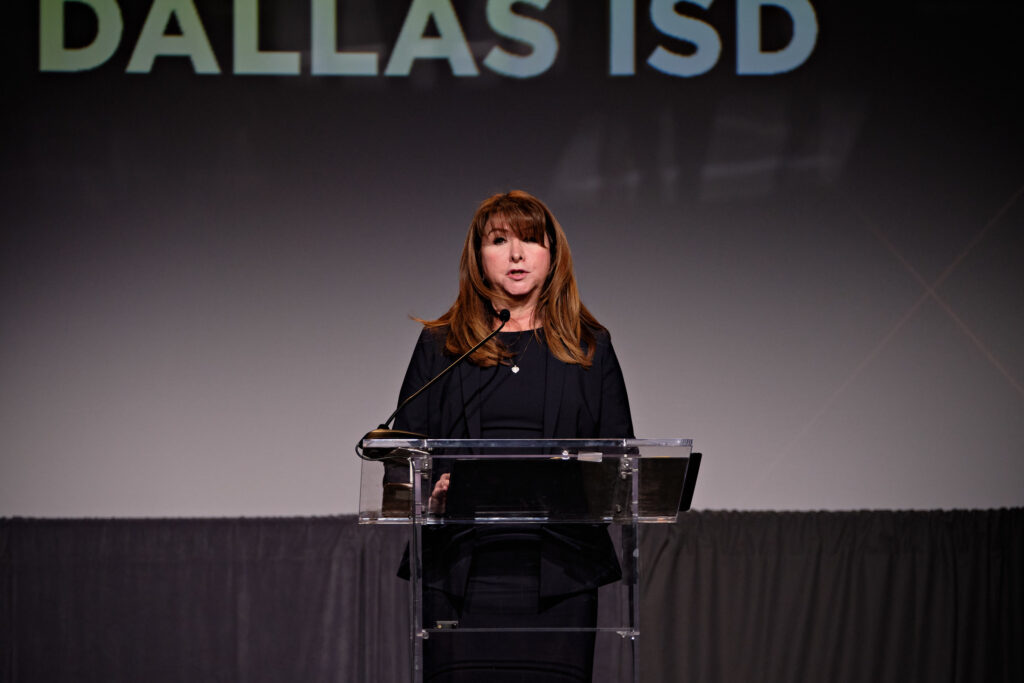A couple weeks ago, we published a story about Dallas ISD’s preliminary State of Texas Assessments of Academic Readiness (or STAAR) scores, which indicated that the district had either reversed learning loss or came really close to doing so in a lot of subjects.
But then more schools across the country started posting their results to statewide testing. And they were much the same. Districts like Richardson ISD also posted positive results. Then Friday, the Texas Education Agency released the results for the 3-8 grade STAAR tests, and they were also extremely promising.
I talked to new Dallas ISD superintendent Stephanie Elizalde Friday morning—which was also her first official day on the job—about how sustainable pandemic-recovery measures would be moving forward, especially after federal funding for pandemic learning runs out. (Dallas ISD, like every district, was able to obtain monies from a federal grant program called ESSER, Elementary and Secondary School Emergency Relief.)
The long and the short of it is this: The district has a plan for that, and isn’t going to let its foot off the gas. Elizalde says there’s no reason why the district can’t continue to post double-digit gains in core subjects, and it’s well-positioned to do that funding-wise, too. Our conversation is below, lightly edited for length and clarity.
Obviously, these STAAR scores are promising. But how will the district start parsing what moved the needle in terms of pandemic rebound, what’s scalable for the future, and what really didn’t do much?
Oh, I absolutely have no doubt that we will continue that trajectory because we all know that the work really happens at the campus level with the support of the central staff. And pretty much everybody is remaining. We’re dealing with the same thing that most districts are with turnover everywhere, but for the most part, it seems like we’re kind of just moving folks.
Some are getting promoted, so some new principals are coming on, but many were assistant principals, or they were principals at another school and are moving to a different school. It doesn’t seem at least from my first report I got yesterday from Human Capital that we’re in any more challenging shape than—as a matter of fact I think we’re in better shape—most districts. The district has done this this incredible work with pay for performance and then the budget that Dr. Hinojosa passed right before his departure that gave additional compensation and incentives, which I think are going to help tremendously to retain as well as recruit.
I don’t see any any red flags or anything of like, “Oh my gosh. How are we going to continue the work?” I think being able to utilize the fact that reading is actually sometimes the area that is the most challenging to see the increases, and (this year) that’s the area the district showed the most increases in, I think, is extremely positive.
And math showed some promise, too.
Math is usually attributed to the fact that when kids were at home they didn’t have the access to the manipulatives and other things for the conceptual development. And once they are in person, the research in many other areas demonstrates that once we give them that exposure, you see the math side start to close very quickly.
So I’m really looking forward to building upon that success the district’s already had. I see nothing except continued double-digit increases and that disproportionate gain, with everybody gaining, but the disproportionate gain of kids of color and kids in poverty, experiencing even more gain. And as we move forward, making sure our reality matches the vision that has been established by our board of trustees.
The talk among a lot of my education-writing colleagues is about the really innovative things that districts have done to address this interrupted learning, but that might end up disappearing when ESSER funds run out. Have you had those discussions with staff about the so-called ESSER cliff?
Yes, I’m going to have probably a two-level response that’s coming from two opposite perspectives. So one, our district, under the great leadership of Dr. Hinojosa and our board of trustees, has always had to deal with monies that we receive, then go away later, because our district has always aggressively gone after grants and funding, even if it was going to be temporary. We would get tons of money for Innovation and creativity knowing very well that we would have to, as a district, figure out sustainability. So, this district has a tradition and a history of being able to adjust to the sustainability issues.
I would even say beyond that, even the sustainability of the pay for performance model, because people said it wouldn’t be sustainable. That came with (former Superintendent) Mike Miles in 2013. So if you think about that for a sec that’s been almost 10 years and people have been talking about how this isn’t going be sustainable, and it’s financially sustainable within a decade. And we’ve expanded it to beyond teachers, right? It’s principals and other executive directors. I think we’re even expanding it to a pilot at a central staff level. So this district has a tradition and history of being creative and ensuring that those programs are sustainable. So that’s one response. Let’s look at our history to say, can the district do that? Does the district know how to do that, right?
And then I’m going to come from the other end, which is the reality—this a lot of money. We got it all at one time and we are utilizing it. How are we going to sustain that? Are we going to be OK? One of the meetings I’ve had was with Dwayne Thompson, our deputy superintendent where finance reports to, and he has a very clear delineation of how to slowly be able to move funding from one source to another over the next three years. Last year was the first year. This coming school year—the 22-23 school year—will be a year two and then three will be the 23-24 school year, which would be the final year of us being able to spend ESSER dollars.
The plan prevents the cliff—it’s what I’m going to call a gradual release so that we can either utilize funds in places where we only need it for, or on one time funding and not recurring costs. If you shift and use it for one time funding, then you can use your local dollars for the recurring costs. And that way when we do have to move away from that funding source, we aren’t in this, “Oh my goodness, where do I find $200 million?” So I think that that’s going to give us the ability to monitor and adjust each year and that will put us in a position of not having that we’re going to have to jump off the cliff where many other districts may be in a different situation.
So many are really interested in what worked to bring those STAARS scores up.
I made a note earlier in our conversation that you had mentioned determining what worked in everything the district tried. And I know a lot of people have asked those questions, you know, super cerebral people like trustee Dustin Marshall right? Super smart people are always asking for that. And I always want to remind everybody that in education it is always going to be super hard to say what worked specifically, because there are so many variables from both the students and communities we serve as well as the interaction of those variables. Sometimes it’s not the one thing, it’s the one thing that was with the other thing that was with another thing.
However we do get enough data, and the way I like to address this is with what I do know absolutely was probably not very much value. That’s easier to say than what definitely worked. It’s a little bit easier to say what we think was worth the investment or wasn’t worth the investment. And so I think I know Cecilia (Oakley, who leads the district’s evaluation and assessment department) and her team will be able to tell us, “this probably didn’t do a whole lot,” and then we’ll be able to go back and and communicate with our board and let them know what things weren’t the best use of our funds. So we’ll use that as we do this last two years of monitoring and adjusting those ESSER dollars. I’m going to be asking about what we think did not have too much of an impact, rather than what we think had the most impact.
Author






